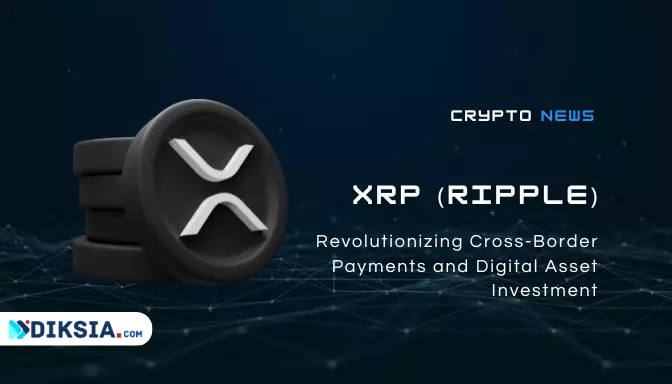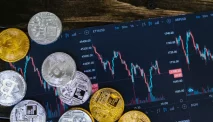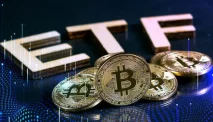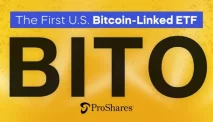Ripple (XRP) History
How did Ripple (XRP) come about?
Ripple’s origins can be traced back to 2004 when Ryan Fugger first conceived the idea of a decentralized digital currency system known as RipplePay. However, it was not until 2012 that Chris Larsen, Jed McCaleb, and Arthur Britto co-founded OpenCoin, which later rebranded to Ripple Labs. The team aimed to develop a payment protocol and cryptocurrency that would revolutionize the traditional banking system.
What is the development roadmap for Ripple (XRP)?
Ripple (XRP) does not have a formal development roadmap, but it has a vision of creating the Internet of Value, a system that enables the seamless and instant transfer of value across any currency, asset, or network. To achieve this vision, Ripple is working on several initiatives, such as:
- Expanding its network and adoption: Ripple aims to grow its network of partners and customers across various regions and sectors, such as banking, remittance, e-commerce, and gaming. It also aims to increase the adoption and utility of XRP as a bridge currency and a digital asset.
- Improving its technology and innovation: Ripple aims to improve its technology and innovation by enhancing its software products, network, and ledger. It also aims to support new use cases and features, such as smart contracts, decentralized applications, and non-fungible tokens.
- Engaging with regulators and policymakers: Ripple aims to engage with regulators and policymakers to promote a clear and favorable regulatory framework for cryptocurrencies and blockchain technology. It also aims to defend itself against the SEC lawsuit and prove that XRP is not a security.
Who are the key people behind Ripple (XRP)?
Some of the key people behind Ripple (XRP) are:
- Brad Garlinghouse: The CEO of Ripple who oversees the company’s strategy, operations, and partnerships. He joined Ripple in 2015 after serving as the CEO of Hightail, a cloud file-sharing service. He has also held senior positions at AOL, Yahoo, and Dialpad.
- David Schwartz: The CTO of Ripple who oversees the development of the XRP Ledger and Ripple’s software products. He is also one of the original architects of the XRP Ledger protocol. He joined Ripple in 2011 after working as a software developer and engineer at several companies.
- Asheesh Birla: The general manager of RippleNet who leads the product, engineering, and business teams that deliver Ripple’s network solutions. He joined Ripple in 2013 after co-founding Snapfish, an online photo service.
- Monica Long: The general manager of RippleX who leads the team that supports developers and entrepreneurs building on the XRP Ledger. She joined Ripple in 2014 after working as a marketing director at BitGo, a digital asset security company.
- Stuart Alderoty: The general counsel of Ripple who leads the legal, policy, compliance, and government relations teams. He joined Ripple in 2019 after serving as the general counsel of CIT Group, a financial services company.
Ripple (XRP) Technology
What is the underlying technology of Ripple (XRP)?
Ripple (XRP) is based on a distributed ledger technology called the XRP Ledger. The XRP Ledger is a decentralized database that records transactions and balances on the Ripple network. The XRP Ledger uses a consensus mechanism called the Ripple Protocol Consensus Algorithm (RPCA) to validate transactions and reach agreement on the state of the ledger.
The XRP Ledger also supports various features and functionalities that enable different use cases for XRP and other digital assets. These include:
- Issued currencies: The XRP Ledger allows users to issue their own currencies or tokens that represent any type of value, such as fiat currencies, commodities, stocks, or loyalty points. Issued currencies can be traded on the XRP Ledger’s built-in decentralized exchange or used for payments.
- Payment channels: The XRP Ledger allows users to create payment channels that enable fast and secure off-ledger transactions between two parties. Payment channels can be used for micropayments, streaming payments, or atomic swaps.
- Escrow: The XRP Ledger allows users to create escrow transactions that lock up a certain amount of XRP or issued currency until certain conditions are met. Escrow transactions can be used for time-locked payments, smart contracts, or collateralized loans.
- Checks: The XRP Ledger allows users to create check transactions that enable one party to authorize another party to withdraw a certain amount of XRP or issued currency from their account. Check transactions can be used for deferred payments, recurring payments, or donations.
- Amendments: The XRP Ledger allows users to propose and vote on amendments that change the rules or features of the ledger. Amendments can be used to introduce new functionalities, fix bugs, or improve performance.
How does Ripple (XRP) work?
Ripple (XRP) works by enabling users to send and receive payments across the Ripple network using XRP or other digital assets. The process of sending and receiving payments on the Ripple network involves the following steps:
- Step 1: The sender initiates a payment by specifying the amount, currency, and destination of the payment. The sender can use any currency or asset that is supported by the Ripple network, such as XRP, USD, EUR, BTC, or ETH.
- Step 2: The Ripple network finds the best path for the payment by using its pathfinding algorithm. The pathfinding algorithm considers various factors, such as liquidity, fees, and exchange rates, to find the most optimal and cheapest way to route the payment.
- Step 3: The Ripple network executes the payment by using its atomic cross-chain protocol. The atomic cross-chain protocol ensures that the payment is either completed in full or not at all, without any intermediaries or risk of failure. The payment may involve multiple hops and conversions between different currencies or assets along the way.
- Step 4: The Ripple network confirms the payment by using its consensus mechanism. The consensus mechanism involves a network of trusted validators that vote on transaction proposals and reach agreement on the state of the ledger. The consensus mechanism can achieve finality in 3-5 seconds and can handle up to 1,500 transactions per second.
What are the advantages of Ripple (XRP)’s technology?
Some of the advantages of Ripple (XRP)’s technology are:
- Speed: Ripple’s technology can process transactions in seconds, compared to minutes or hours for other cryptocurrencies and days or weeks for traditional payment systems.
- Cost: Ripple’s technology can reduce transaction fees by up to 60%, compared to other cryptocurrencies and up to 80%, compared to traditional payment systems.
- Scalability: Ripple’s technology can handle up to 1,500 transactions per second, compared to 7 for Bitcoin and 15 for Ethereum.
- Security: Ripple’s technology uses cryptography and a network of trusted validators to secure transactions, without relying on proof-of-work or proof-of-stake algorithms that consume a lot of energy and are vulnerable to attacks.
- Interoperability: Ripple’s technology can connect different payment systems, currencies, and networks, enabling seamless and frictionless payments across borders and markets.
Ripple (XRP) Market
What is the current market capitalization of Ripple (XRP)?
As of July 3, 2023, the current market capitalization of Ripple (XRP) is $21.8 billion, according to CoinMarketCap. This makes it the sixth-largest cryptocurrency by market cap, behind Bitcoin, Ethereum, Binance Coin, Cardano, and Dogecoin.
What is the trading volume of Ripple (XRP)?
As of July 3, 2023, the trading volume of Ripple (XRP) is $1.6 billion, according to CoinMarketCap. This makes it the ninth-most traded cryptocurrency by volume, behind Bitcoin, Ethereum, Tether, Binance Coin, Cardano, Dogecoin, USD Coin, and Polkadot.
What are the top exchanges that list Ripple (XRP)?
Some of the top exchanges that list Ripple (XRP) are:
- Binance: The world’s largest cryptocurrency exchange by trading volume and users. Binance offers spot trading, margin trading, futures trading, options trading, and staking services for XRP and other cryptocurrencies. Binance also supports XRP as a base currency and a quote currency for various trading pairs.
- Kraken: One of the oldest and most reputable cryptocurrency exchanges in the industry. Kraken offers spot trading, margin trading, futures trading, and staking services for XRP and other cryptocurrencies. Kraken also supports XRP as a base currency and a quote currency for various trading pairs.
- Bitstamp: One of the first and longest-running cryptocurrency exchanges in the world. Bitstamp offers spot trading and custody services for XRP and other cryptocurrencies. Bitstamp also supports XRP as a base currency and a quote currency for various trading pairs.
- Coinbase: The largest cryptocurrency exchange in the U.S. by users and revenue. Coinbase offers spot trading, margin trading, and custody services for XRP and other cryptocurrencies. Coinbase also supports XRP as a base currency and a quote currency for various trading pairs.
- Huobi: One of the leading cryptocurrency exchanges in Asia and globally. Huobi offers spot trading, margin trading, futures trading, options trading, and staking services for XRP and other cryptocurrencies. Huobi also supports XRP as a base currency and a quote currency for various trading pairs.






